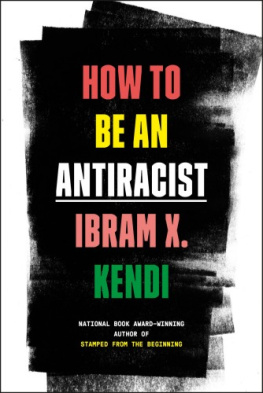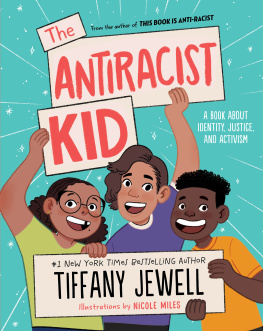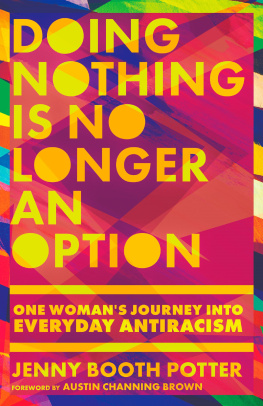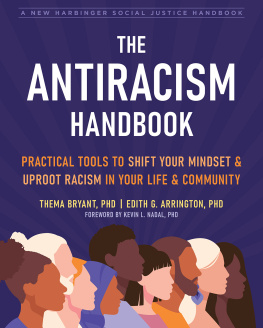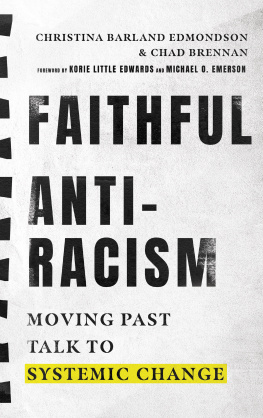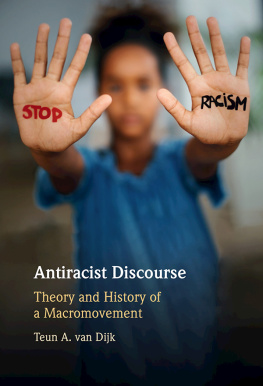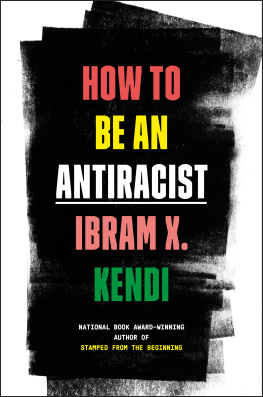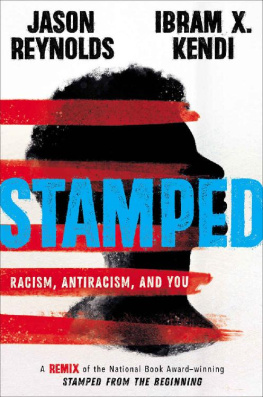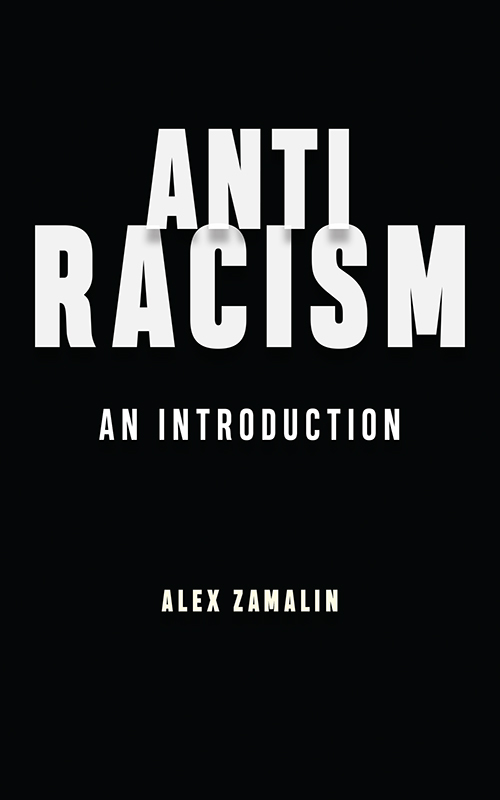
Antiracism
Antiracism
An Introduction
Alex Zamalin

NEW YORK UNIVERSITY PRESS
New York
NEW YORK UNIVERSITY PRESS
New York
www.nyupress.org
2019 by New York University
All rights reserved
References to Internet websites (URLs) were accurate at the time of writing. Neither the author nor New York University Press is responsible for URLs that may have expired or changed since the manuscript was prepared.
Library of Congress Cataloging-in-Publication Data
Names: Zamalin, Alex, 1986 author.
Title: Antiracism : an introduction / Alex Zamalin.
Description: New York : New York University Press, [2019] | Includes bibliographical references and index.
Identifiers: LCCN 2018026985| ISBN 9781479849284 (cl : alk. paper) | ISBN 9781479822638 (pb : alk. paper)
Subjects: LCSH: Anti-racismUnited States. | United StatesRace relations.
Classification: LCC E184.A1 Z36 2019 | DDC 305.800973dc23
LC record available at https://lccn.loc.gov/2018026985
New York University Press books are printed on acid-free paper, and their binding materials are chosen for strength and durability. We strive to use environmentally responsible suppliers and materials to the greatest extent possible in publishing our books.
Manufactured in the United States of America
10 9 8 7 6 5 4 3 2 1
Also available as an ebook
For Alison, Sam, and Anita
Contents
The Origins of American Antiracism
August 11, 2017, shocked many Americans. Hundreds of white supremacists gathered in the university town of Charlottesville, Virginia, screaming, Jews will not replace us! and the Nazi slogan Blood and Soil! under the banner of Unite the Right. What were once Klan hoods were replaced with khakis and polo shirts. Nazi swastikas were abandoned in favor of Confederate flags. But the message was clear to anyone who paid attention. These white nationalists felt emboldened to go public, especially after the shock of 2016: the election of the Republican president Donald Trump, who ran a campaign dubbed Make America Great Again!, which played on the fantasy that certain parts of America had been taken away, besmirched, denigrated, and abused after eight years of the first black president, Barack Obama. Trumps campaign embraced the racist far right, the so-called alt-right, which calls for reclaiming European American civilization and warns of a white genocide, a supposed conspiracy that lax immigration standards, combined with progressive social welfare initiatives, are secretly designed to eliminate the white American majority and make America into a majority-minority nation. What was even more disturbing for many people, however, was that just a week after the Charlottesville rally, which concluded with one of the white supremacists
Charlottesville was a reminder that racism has always been indigenous to US history. But it also revealed racisms greatest existential threat. Charlottesville counterprotestors were part of a long US tradition of citizens who were not shocked by but expected racism. These citizens countered racist ideas, attacked racial inequality, and threatened racisms grip on power. They constitute the antiracist American political tradition on which American democracys future depends. Antiracism tells their story.
Racism and Antiracism
In order for racism to make sense, it has been based in a philosophy of hierarchy, identity, and difference. Before the seventeenth century, it was justified theologically and biblically. A passage from the book of Genesis, which describes the Curse of Hamwhose descendents were condemned to bondage for his mistreatment of his father, Noahwas used to justify the subjugation of people with darker skin. But soon this theological explanation morphed into something more scientific.
Despite these naturalist arguments claim to scientific objectivity and value neutrality, they became the perfect way to endow moral value to skin color and, therefore, to justify the enslavement and economic, political, and cultural exploitation of nonwhite people throughout the globe. Although racism contradicted the Enlightenment idea that all people are born equal with inalienable rights such as freedom and human dignity, it became a total ecosystem that created obscene differences in peoples life chances. White people got political rights and physical safety. What nonwhite people got instead was something brutal: enslavement of their bodies,
But racism did not go unopposed in the US; it created the antiracist. The first antiracists, antislavery abolitionists from the American founding in the late eighteenth century until emancipation after the end of the Civil War in 1865, struggled against the systematic exploitation of black labor under slavery. The next major wave came after the end of the Reconstruction period (18651877) and during the Jim Crow era in the 1890s through the civil rights movement of the 1950s and 1960s, when antiracists challenged the destruction of black bodies under lynching and the dehumanizing second-class citizenship of separate but equal public facilities that was formalized by the infamous Supreme Court decision Plessy v. Ferguson (1896). Ever since the 1960s, in what has been described as the post-civil-rights era, antiracists have challenged de facto segregation, a condition in which racial equality is formalized within antidiscrimination law. But a long history of racial inequality and its aftereffects has led to the clustering of black citizens in eviscerated segregated neighborhoods and disparities in income, wealth, education, mass incarceration, and rates of police brutality.
Throughout history, antiracists have engaged in various strategies of resistance, some of which were successful and others of which were not. They have championed the idea of liberation but sometimes have been blind to their own exclusionary commitments when it came to gender, class, sexuality, and even race. But their overarching focus has been on challenging racism. Many of their counterarguments and direct actions assaulted racisms public face, its most visible enforcer: the unmistakable American racistthe slaveholder, lyncher, Ku Klux Klansman, social Darwinist, eugenicist, southern Democrat, and neo-Nazi. But antiracists have also, and perhaps even more importantly, unmasked racisms secret weapon: the ordinary white American who has sometimes tepidly, conditionally, equivocally, or even shamefully agreed with the unmistakable racist.
Some antiracists have called out racists bad faith and malicious fantasy of a white utopia in segregated, enclosed communities free from the burden of black thoughts. Some have rejected as dubious the demands for empirical evidence before believing that the first black US president, Barack Obama, is truly an American citizen, rather than an anticolonial radical Kenyan. Others have debunked the myth that single black mothers, so-called welfare queens, exploit Social Security and Medicaid benefits. Some have rendered absurd the idea that black culture has no interest in educating its youth. And still others have attacked the instruments used to secure racial inequality: voting-booth intimidation, the separation of powers, checks and balances, murder, rape, terrorism, sterilization, redlining, redistricting, jails, prisons, and the police.
Antiracist Thought and Politics in History
Antiracism has had an extensive intellectual and political history in the US. Colloquially, the term
Next page

